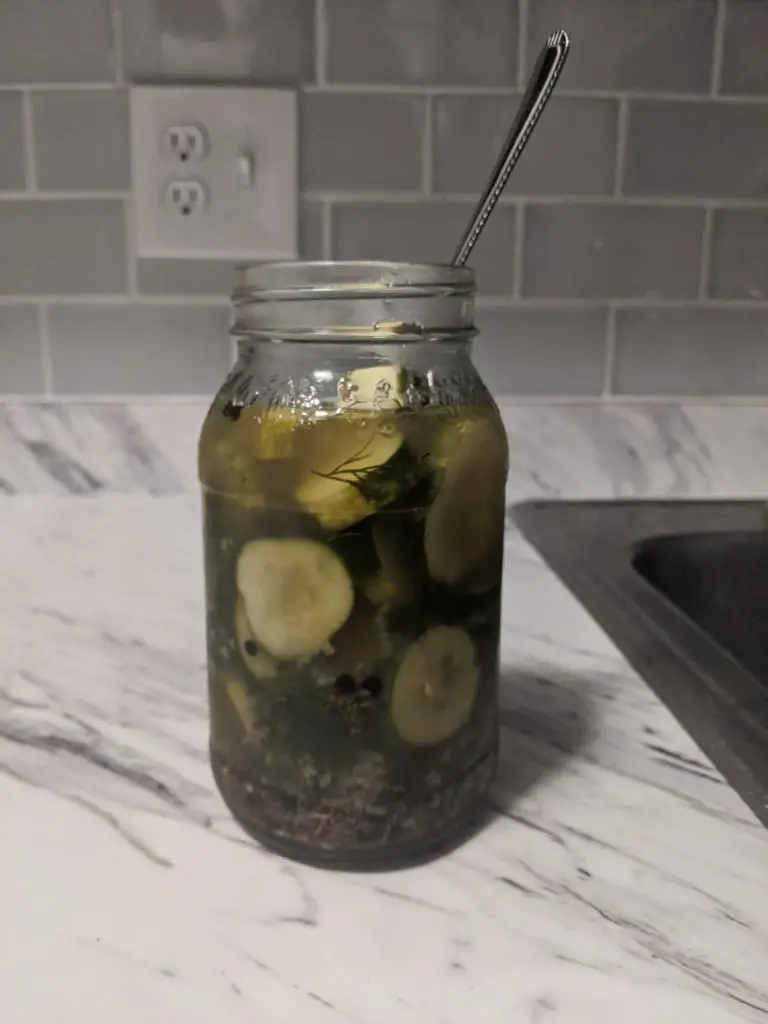Botulism is one of the most commonly known risks associated with making pickles at home. This is because while making pickles seems easy, sometimes food safety measures are overlooked.
What is Botulism? Botulism is an illness caused by harmful bacteria thriving and creating toxins in food borne environments with little oxygen. The bacterium that causes Botulism is called Clostridium Botulinum, which creates a nerve toxin that attacks the nervous system.
There are many kinds of Botulism, but we will focus on food botulism and how it relates to making pickles at home, how to detect the warning signs, what action to take, and how to prevent it altogether.
Botulism in Pickles
Botulism is a food borne illness that is not communicable. If you are assisting someone infected with botulism, you will not contract it from them like other illnesses. If you have not eaten contaminated food, you will not contract it.
For fermented pickles, using a high enough percentage of salt brine and keeping your pickles submerged are two steps that will help prevent botulism from forming. For refrigerator pickles, leaving your pickles in the refrigerator when you are not eating them is also a good preventive measure. In any type of pickle you have placed into a jar, a bulging lid is a sign of spoilage and possibly botulism. If you see this, discard the pickles, regardless if they smell bad or not. This is due to the gas given off by the bacteria.

Warning Signs and Symptoms of Botulism
If you have foodborne botulism, you may see warning signs from a half a day to a day and half, or 12 to 36 hours, later. The sooner you see symptoms the worse it will be, so do not hesitate to seek medical attention.
Technically, botulism can only be truly detected with lab tests. It does not have a distinct smell or anything like that, but if you have eaten pickles from a jar with a bulging lid and the next day exhibit multiple warning signs, you will have a good idea of what is going on.
The warning signs below were provided by the Cleveland Clinic. Please note that the symptoms are different from adults and infants.
| Adult Botulism Symptoms | Infant Botulism Symptoms |
|---|---|
| Difficulty swallowing or speaking. | Constipation |
| Dry mouth. | Poor Feeding |
| Facial weakness (throughout the face). | Excessive Sleepiness |
| Blurred or double vision. | Poor Reflexes |
| Drooping eyelids. | |
| Nausea, vomiting and abdominal cramps. | |
| Difficulty breathing. | |
| Paralysis |
What to Do If You Think You Have Eaten Botulism Contaminated Pickles
If you believe you have consumed pickles that may be contaminated with botulism, seek medical attention immediately. Botulism is not an illness you shrug off and see how you feel the next day. If you had recently consumed the pickles, your doctor may tell you to induce vomiting. You will almost definitely need a hospital stay if you are infected.
Some of the symptoms of botulism occur in other diseases, so your doctor may run a series of tests. Only a lab test can tell truly determine if you have botulism, but that does not mean you should assume the worst and act accordingly, it could save your life. About five out of every one hundred people with botulism die.
Preventing Botulism In Your Pickles
There are several guidelines you can follow to prevent botulism in your pickles, whether you have made them yourself or purchased them from the supermarket. For refrigerator pickles you can purchase at the supermarket, refrigerate them after opening and keeping them in the refrigerator when not being eaten. This applies to any pickle you purchase at store, whether it was refrigerated when you purchased it or not. All labels will show the “refrigerate after opening” message.
If you are making your own pickles at home, using sterile and clean utensils, equipment, and storage containers (like mason jars) is the first step in preventing botulism. For pickles you are canning, the key points are to follow complete processing times, throw away anything that has a swollen or bulging lid, and refrigerate any canned pickles after you have opened them. A complete guide on safe canning is offered by the U.S. Department of Agriculture. For fermented pickles, similar rules apply but keep your cucumbers submerged so the environment is free from oxygen and the good bacteria can do their magic.
If you have made pickles that you later found to have botulism, you should discard the pickles but any utensils, containers, etc. that may have been cross contaminated should be cleaned and sterilized.

Cleaning to Prevent Cross Contamination
Any food that was touched by these items that could have been cross contaminated should also be thrown out. Below are instructions for cleaning surfaces that you may have spilled contaminated pickles on using a bleach solution, courtesy of the Center for Disease Control.
- Add ¼ cup bleach for each 2 cups of water.
- Completely cover the spill with the bleach solution.
- Place a layer of paper towels, 5 to 10 towels thick, on top of the bleach.
- Let the towels sit for at least 15 minutes.
- Wipe up any remaining liquid with new paper towels.
- Clean the area with liquid soap and water to remove the bleach.
- Wash your hands with soap and running water for at least 2 minutes.
- Discard sponges, cloths, rags, paper towels, and gloves that may have come into contact with contaminated food or containers with the food. To discard safely, follow instructions for discarding food that may be contaminated.
For further reading the Cleveland Clinic has great information on home canning and how to prevent Botulism when canning at home. As we always recommend, when you are in doubt, throw away the pickles. You never want to roll the dice with food safety. You can always make more pickles.
